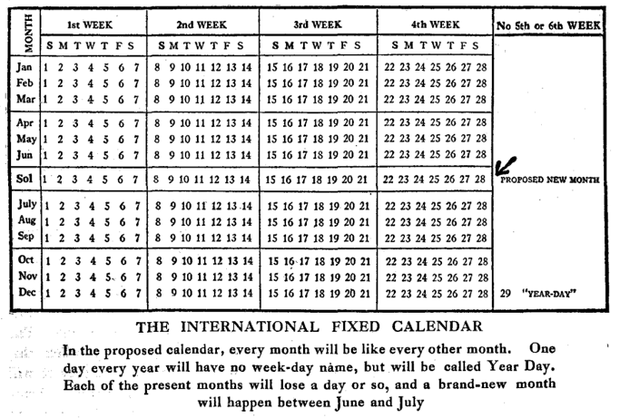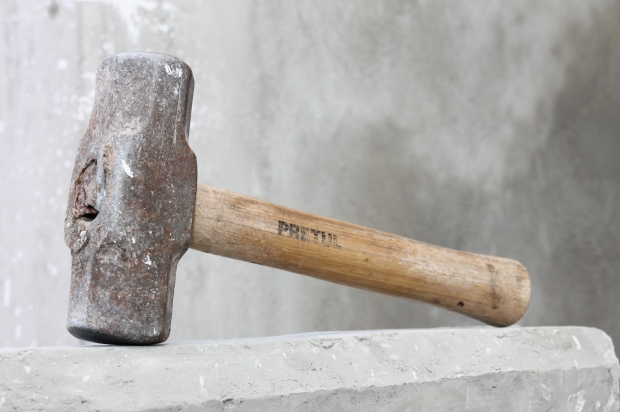I love the podcast 99% Invisible, I could probably post almost all of their episodes here on my blog of interesting things I learned. This one, though, really appealed to me. I really liked this idea of reforming the calendar to a 13 month schedule. Every month would have 28 days and each day of the month would correspond to the same number in each month, e.g. the second is always a Monday, the twenty first is always a Saturday. All holidays would be moved to Monday. (Although, I’m very fond of Thanksgiving, since it falls on a Thursday, most offices will take the rest of the week off.) Traditionalists would be appalled, especially the problem with what to do with July 4th holiday. Wikipedia has a page on it listing pros and cons of the calendar, where, I believe, most to the cons are weak (or should that be week). Alas, it’s only a thought experiment, I really don’t think it would ever catch on.
The 13 Month Calendar








